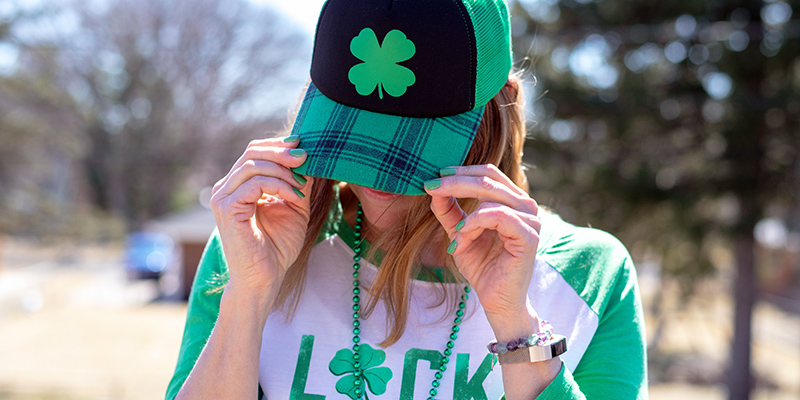9 Of The Most Interesting St. Patricks Day Facts
The Feast of Saint Patrick is a widely celebrated occasion in the United States. But, not everything you know about the celebration may be true. Educate yourself by reading through these St. Patricks Day facts.
Interesting St. Patricks Day Facts Everyone Should Know
While the United States government does not recognize St. Patrick’s Day as a federal holiday, millions of people across the country still take the time to celebrate the grand occasion. With over 31.5 million Americans boasting Irish ancestry, this doesn’t come as much of a surprise. But, there are still some St. Patricks Day facts that may surprise you.
1. The Birthplace of Saint Patrick
Saint Patrick is known as the patron saint of Ireland, but did you know that he wasn’t even born there? Many historians believe that Saint Patrick was born in Britain at the end of the 4th century. When he was 16 years old, Irish raiders kidnapped him. He was subsequently sold to a Celtic priest as a slave in Northern Ireland. He spent 6 years working as a shepherd before making his escape back to Britain.
How did he find his way back to Ireland? Well, eventually, Saint Patrick returned to Ireland as a missionary, introducing many parts of the country to Christianity. Interestingly, Saint Patrick was not even born as Patrick. Instead, he was born Maewyn Succat. Later on, he took the name Patricius during his religious journeys.
2. The Significance of the Shamrock
 The shamrock has long been the symbol of St. Patrick’s Day. You will find it everywhere around this time of the year — from shoddy bar merchandise to your local arts and crafts store. It is even a popular party costume.
The shamrock has long been the symbol of St. Patrick’s Day. You will find it everywhere around this time of the year — from shoddy bar merchandise to your local arts and crafts store. It is even a popular party costume.
But, what exactly is the significance behind this three-leaf clover? Well, it is said that Saint Patrick had used the shamrock as a way to preach Christianity, likening its three leaves to the Holy Trinity. The Celts called it seamroy and considered the plant sacred.
3. The Color Blue
Perhaps one of the most fascinating St. Patricks Day facts is that the celebration was initially associated with the color blue — not green. The change is believed to have happened because of the green color in the Irish flag as well as the day’s connection with shamrocks. Additionally, Ireland is known as “The Emerald Isle.” Today, it is nearly impossible to go out on St. Patrick’s Day without seeing the color green.
4. Most Consumed Beverage
If you love celebrating St. Patrick’s Day, then you probably already know the answer to this. Drinking is one of the most popular ways to celebrate the occasion, so it should come as no surprise that beer is one of the most consumed beverages on St. Paddy’s Day.
While many pubs and bars dye their beer green to commemorate the event, one particular brand of beer remains at the top: Guinness. In fact, as part of the St. Patrick’s Day celebration, an estimated 13 million pints of Guinness is consumed worldwide.
5. The First St. Patrick’s Day Celebration in the U.S.
The United States has been celebrating St. Patrick’s Day for a very long time, which makes sense considering there are millions of Americans claiming to be of Irish descent. But, did you know that the first St. Patrick’s Day celebration in the country took place in Boston in 1737?
This is not when the first St. Patrick’s Day parade occurred, though. According to history records, the tradition of holding parades, which originated in America, began in 1601 in what is known today as St. Augustine, Florida. And we have Ricardo Artur, the Irish vicar of the Spanish colony, to thank for it.
6. Chicago’s Unique St. Patrick’s Day Celebration
While cities across the United States celebrate St. Patrick’s Day with parades and pub crawls, Chicago is quite unique. On the morning of their St. Patrick’s Day parade every year, the Windy City dyes the Chicago River green for a few hours. Visitors can view the green river between Columbus Drive and State Street. The dye is environmentally-friendly, though, so it does not do any harm to the river or its inhabitants. The first time the city ever dyed its river green was in 1962.
7. The Shortest St. Patrick’s Day Parade
St. Patrick’s Day parades have become a staple in many cities across the globe, and no two parades are exactly alike. Some go on for a long time, while others only last a little while. But, the shortest St. Patrick’s Day parade takes place every year in Hot Springs, Arkansas. The parade has a route that only measures 98 feet (about 30 meters) long.
Before Hot Springs, though, the record for the shortest St. Patrick’s Day parade was 295 feet (90 meters) long. The parade took place in Dripsey, a village in County Cork, Ireland.
8. Female Leprechauns Don’t Exist
 According to Irish folklore, leprechauns were known as “lobaircin,” which translates to “small-bodied fellow.” The origin of leprechauns likely comes from the Celtic belief in fairies.
According to Irish folklore, leprechauns were known as “lobaircin,” which translates to “small-bodied fellow.” The origin of leprechauns likely comes from the Celtic belief in fairies.
But, did you know that there are no records of female leprechauns in Celtic folktales? If that is the case, how do leprechauns procreate? Well, some believe that leprechauns are actually the unwanted children of fairies. As such, folktales have always described them as cranky and untrusting creatures in folktales.
9. Four-Leaf Clover Odds
Shamrocks are three-leaf clovers, and it takes a rare genetic mutation for clovers to have four leaves. This is why it is so hard to find a four-leaf clover. It is also why many people associated the four-leaf clover with luck. In addition to luck, according to Irish Celtic beliefs, each leaf on the four-leaf clover represents love, faith, and hope. But, what are even the odds of finding a four-leaf clover? According to calculations, about 1 in 10,000.
The More You Know
St. Patrick’s Day is just around the corner. But, before you go on that pub crawl or watch another parade, it is important to first learn some interesting St. Patricks Day facts. Who knows? These facts may be the answer to questions at your next St. Patrick’s Day trivia night!
RELATED ARTICLES:
- What Is An HOA? FAQs Answered Here
- 10 Most Common HOA Service Requests And How To Handle Them
- How To Read HOA Financial Statements And Understand Them



